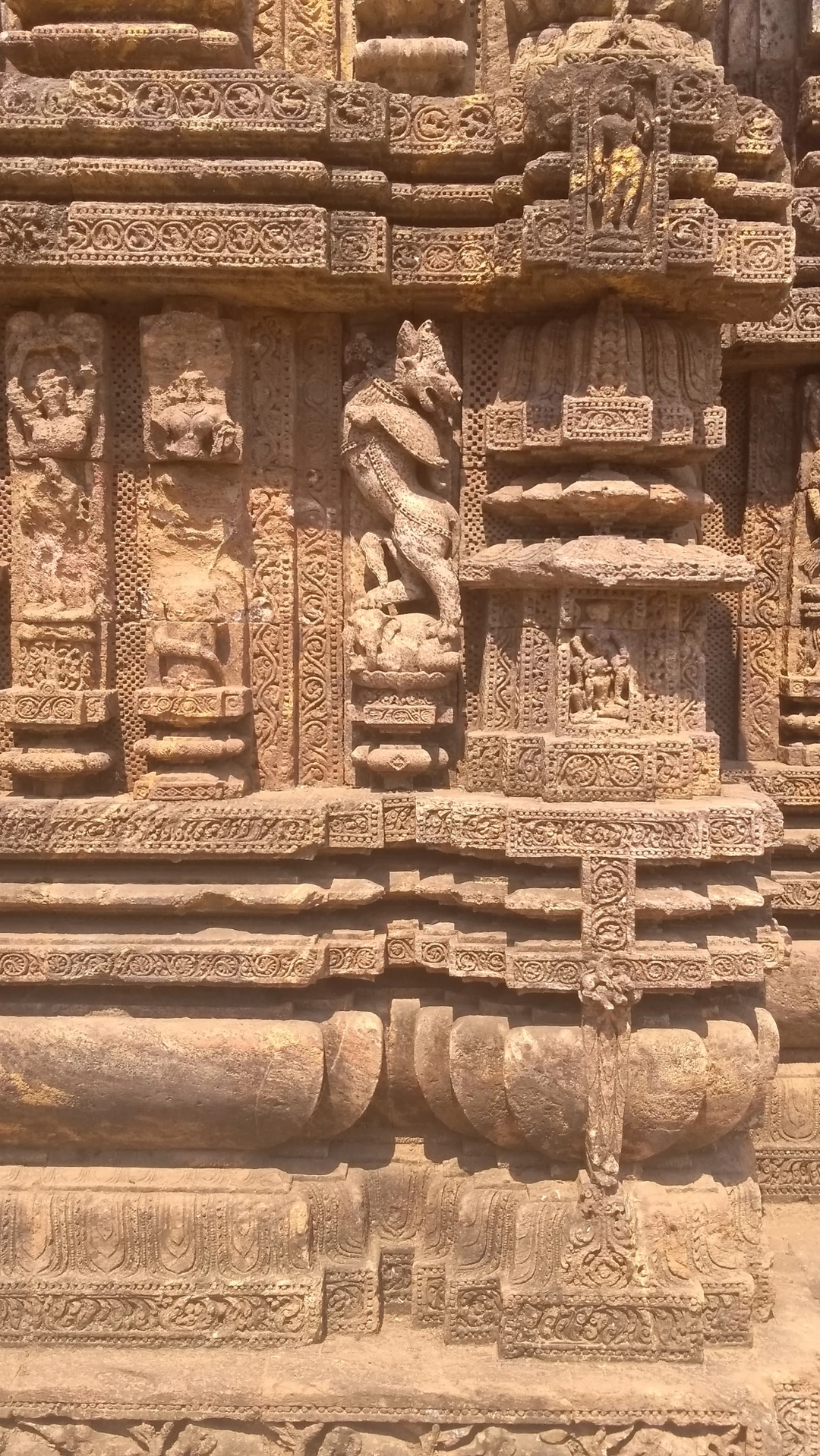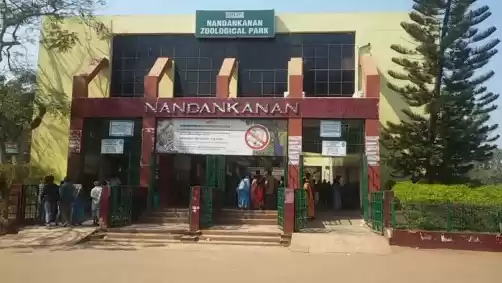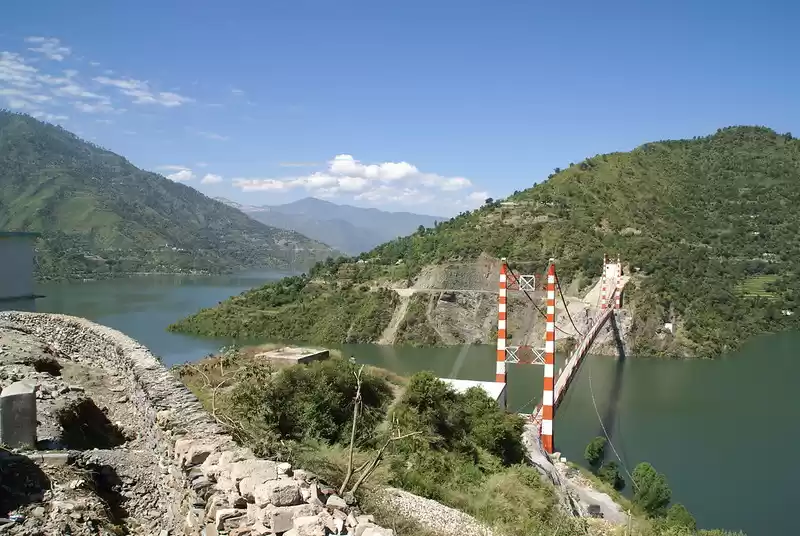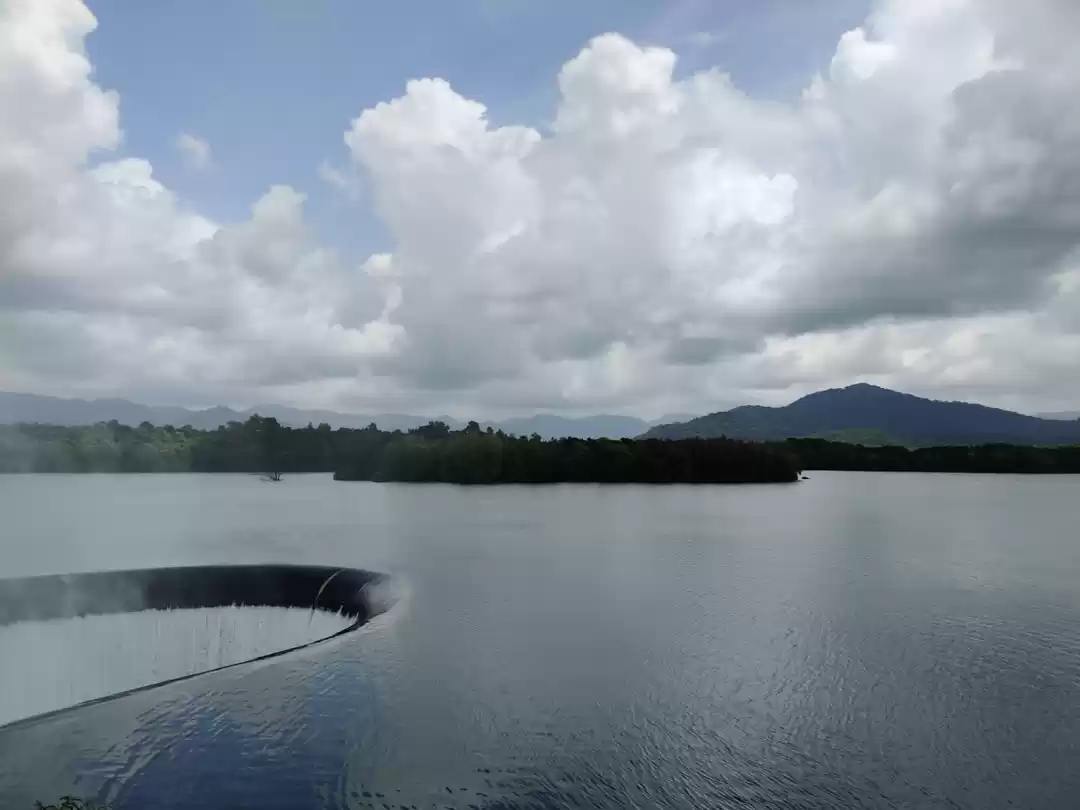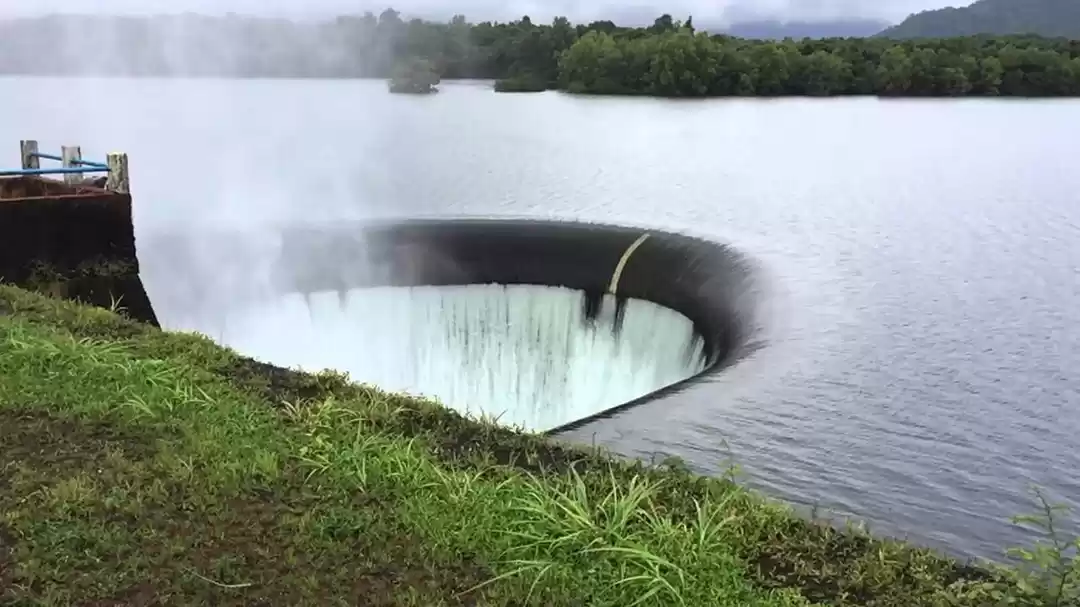Are you looking for a unique and fascinating destination to explore in Odisha? Do you want to witness the amazing feat of human ingenuity and creativity that has transformed the landscape and the lives of millions of people? If yes, then you should definitely visit Hirakud Dam, the longest earthen dam in the world and a marvel of engineering.

Hirakud Dam is a massive structure that spans across the Mahanadi river, one of the major rivers of India. It is located about 15 km from Sambalpur, the largest city and the cultural hub of western Odisha. The dam is not only a source of irrigation, power generation, flood control, and industrial use, but also a popular tourist attraction that offers a variety of activities and experiences for visitors.
In this article, we will tell you everything you need to know about Hirakud Dam, its history, its architecture, its purpose, and its tourism potential. We will also give you some tips and recommendations on how to reach, when to visit, where to stay, and what to eat at this amazing place. So, read on and discover why Hirakud Dam should be on your bucket list.
History of Hirakud Dam
The idea of building a dam on the Mahanadi river was first proposed by M. Visveswararya, a renowned engineer and statesman, in 1937. He envisioned a multipurpose river valley project that would harness the water resources of the river for the benefit of the people and the economy of Odisha and India.
However, it was not until after India’s independence that the project was taken up seriously. Dr. B. R. Ambedkar, the then Minister of Power and Irrigation, played a crucial role in initiating and overseeing the project. He appointed Sir Hawthorne Lewis as the chief engineer and assigned him the task of designing and constructing the dam.
The foundation stone of the dam was laid by Sir Hawthorne Lewis on March 15, 1946. The first batch of concrete was poured by Pandit Jawaharlal Nehru, the first Prime Minister of India, on April 12, 1948. The construction of the dam took about nine years to complete and involved thousands of workers and engineers. The dam was inaugurated by Pandit Jawaharlal Nehru on January 13, 1957.
The construction of the dam also involved some challenges and sacrifices. Many villages and temples were submerged or relocated due to the creation of the reservoir. Some people also lost their lives or livelihoods due to the project. However, the dam also brought many benefits and opportunities for the people and the region.
Also Read: 10 Unmissable Places of Interest in Orissa
Architecture and Technical Details of Hirakud Dam
Hirakud Dam is an earthen dam, which means it is made up of soil, rock, or sand rather than concrete or steel. It is also a composite dam, which means it consists of two parts: a main dam and two dykes on either side. The main dam is 4.8 km long and connects two hills: Chandili Dunguri on the left bank and Lakhanpur Dunguri on the right bank. The two dykes are 25.8 km long on the left side and 10.7 km long on the right side. Together, they form a continuous barrier across the Mahanadi river.
The height of the dam is 60.96 m above the river bed and 45.72 m above the ground level. The width of the dam is 549 m at the base and 9 m at the top. The dam has a spillway capacity of 42,450 cubic meters per second, which means it can release excess water from the reservoir during floods or emergencies. The spillway has 64 gates that can be opened or closed as per requirement.
The reservoir created by the dam is one of the largest artificial lakes in Asia. It covers an area of 743 sq km and has a storage capacity of 5.8 billion cubic meters. The reservoir has a catchment area of 83,400 sq km, which means it receives water from a large area drained by the Mahanadi river and its tributaries.
The dam also has a power generation capacity of 347.5 MW, which means it can produce electricity for domestic and industrial use. The dam has two power houses: one at Burla on the left bank and one at Chiplima on the right bank. The Burla power house has six units with a total capacity of 259.5 MW, while the Chiplima power house has three units with a total capacity of 72 MW.
You May Love: Dams in India You Must Visit Once
Purpose and Benefits of Hirakud Dam
Hirakud Dam is one of the first multipurpose river valley projects in India, which means it serves multiple objectives and benefits for the people and the environment. Some of the main purposes and benefits of the dam are:
Flood control: The dam helps to regulate the flow of the Mahanadi river and prevent or reduce the damage caused by floods. The dam can store excess water during the monsoon season and release it gradually during the dry season. The dam has saved many lives and properties from the devastating floods that used to occur frequently in the past.
Irrigation: The dam provides water for irrigation to a large area of land in Odisha and neighboring states. The dam has created a network of canals and distributaries that supply water to about 1.55 million hectares of land for various crops such as rice, wheat, sugarcane, cotton, etc. The dam has improved the agricultural productivity and income of the farmers.
Power generation: The dam produces electricity for domestic and industrial use. The dam has contributed to the electrification and development of many villages and towns in Odisha and nearby regions. The dam has also supported the growth of industries such as steel, aluminum, cement, etc. that require a large amount of power.
Industrial use: The dam provides water for industrial use to various sectors such as mining, metallurgy, chemical, paper, etc. The dam has facilitated the establishment and expansion of many industries in Odisha and neighboring states. The dam has also created employment and revenue opportunities for the people.
Navigation: The dam enables navigation on the Mahanadi river and its tributaries. The dam has improved the transportation and communication facilities for the people living along the river banks. The dam has also promoted trade and commerce among different regions.
Tourism and Attractions at Hirakud Dam
Hirakud Dam is not only a functional and beneficial structure, but also a scenic and attractive destination for tourists. The dam offers a variety of activities and experiences for visitors who want to enjoy the beauty and diversity of nature and culture. Some of the tourism and attractions at Hirakud Dam are:
Driving across the dyke road: One of the most thrilling and enjoyable activities at Hirakud Dam is driving across the dyke road that connects the two ends of the main dam. The dyke road is 21 km long and offers a panoramic view of the reservoir, the hills, and the sky. The dyke road is also a great place to witness the sunrise and sunset.
Visiting Gandhi Minar and Nehru Minar watchtowers: Another exciting activity at Hirakud Dam is visiting the Gandhi Minar and Nehru Minar watchtowers that are located on either side of the main dam. The watchtowers are named after Mahatma Gandhi and Pandit Jawaharlal Nehru, who played important roles in the construction of the dam. The watchtowers provide a bird’s eye view of the dam, the reservoir, and the surrounding area.
Birdwatching at Jawahar Udyan park: One of the most relaxing and enjoyable activities at Hirakud Dam is birdwatching at Jawahar Udyan park that is situated on an island in the reservoir. The park is named after Pandit Jawaharlal Nehru, who planted a mango tree here during his visit to the dam. The park is home to various species of birds such as herons, egrets, cormorants, kingfishers, etc. The park is also a good place to have a picnic or a stroll.
Boating on the reservoir lake: One of the most fun and adventurous activities at Hirakud Dam is boating on the reservoir lake that covers a vast area of water. The lake offers a refreshing and exhilarating experience for visitors who want to explore the different islands, the submerged temples, and the wildlife in the reservoir. The lake also provides opportunities for fishing, water skiing, and jet skiing.
Visiting Budharaja Temple and Ghanteshwari Temple: One of the most spiritual and cultural activities at Hirakud Dam is visiting Budharaja Temple and Ghanteshwari Temple that are located near the dam site. Budharaja Temple is dedicated to Lord Shiva and is situated on top of a hill that overlooks the reservoir. Ghanteshwari Temple is dedicated to Goddess Ghanteshwari, who is believed to protect the sailors from the storms in the river. Both temples are ancient and revered by the locals.
Exploring Cattle Island and Lost Temples: One of the most unique and mysterious attractions at Hirakud Dam is exploring Cattle Island and Lost Temples that are hidden in the reservoir. Cattle Island is an island that is inhabited by wild cattle that have adapted to their isolated environment. Lost Temples are temples that were submerged or relocated during the construction of the reservoir. Some of these temples are still visible during low water levels or can be reached by boat.
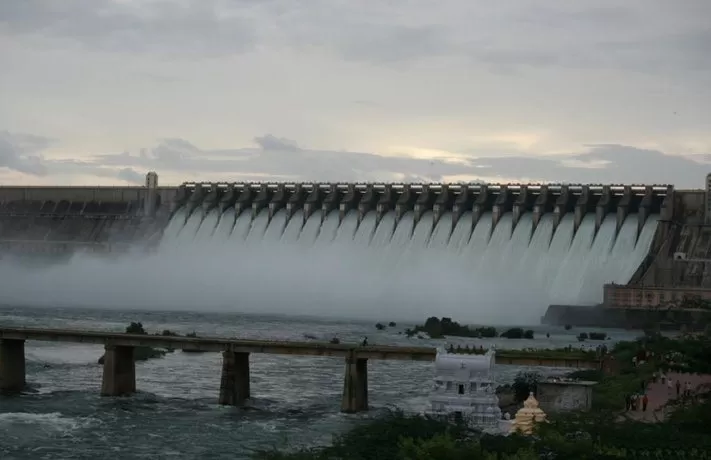
Best Time to Visit Hirakud Dam
The best time to visit Hirakud Dam is between October and March, when the weather is pleasant and the water level is high. This is also the time when many festivals and events are celebrated in Odisha, such as Durga Puja, Diwali, Konark Dance Festival, etc. You can enjoy the cultural and natural diversity of Odisha during this period.
However, you can also visit Hirakud Dam during other months, depending on your preference and interest. For example, if you want to see the dam in its full glory, you can visit during the monsoon season (June to September), when the spillway gates are opened and the water gushes out with a roaring sound. If you want to see the lost temples or the cattle island, you can visit during the summer season (April to May), when the water level is low and the islands and temples are more visible.
How to Reach Hirakud Dam
Hirakud Dam is easily accessible by road, rail, and air from different parts of India. The nearest airport is Biju Patnaik International Airport in Bhubaneswar, which is about 300 km away from Hirakud Dam. You can take a flight to Bhubaneswar from major cities like Delhi, Mumbai, Kolkata, Chennai, etc. and then take a bus or a taxi to Hirakud Dam.
The nearest railway station is Sambalpur Junction, which is about 15 km away from Hirakud Dam. You can take a train to Sambalpur from major cities like Delhi, Mumbai, Kolkata, Chennai, etc. and then take a bus or a taxi to Hirakud Dam.
The nearest bus station is Sambalpur Bus Stand, which is about 16 km away from Hirakud Dam. You can take a bus to Sambalpur from nearby cities like Bhubaneswar, Cuttack, Rourkela, etc. and then take a bus or a taxi to Hirakud Dam.
You can also drive to Hirakud Dam by your own vehicle or rent a car from Bhubaneswar or Sambalpur. The road condition is good and the route is scenic. You can follow the National Highway 53 or the State Highway 10 to reach Hirakud Dam.
Where to Stay and What to Eat at Hirakud Dam
There are many options for accommodation and food near Hirakud Dam. You can choose from hotels, resorts, guest houses, lodges, etc. depending on your budget and preference. Some of the popular places to stay near Hirakud Dam are:
Panthanivas Sambalpur: This is a government-run hotel that offers comfortable rooms with basic amenities and a restaurant that serves local and Indian cuisine. It is located about 12 km from Hirakud Dam and has a view of the reservoir.
Hotel Sheela Towers: This is a private hotel that offers deluxe rooms with modern amenities and a restaurant that serves local and Indian cuisine. It is located about 14 km from Hirakud Dam and has a view of the city.
Hotel Harjit Residency: This is a private hotel that offers standard rooms with basic amenities and a restaurant that serves local and Indian cuisine. It is located about 15 km from Hirakud Dam and has a view of the road.
Hotel Saket Heritage: This is a private hotel that offers spacious rooms with modern amenities and a restaurant that serves local and Indian cuisine. It is located about 16 km from Hirakud Dam and has a view of the garden.
You can also find many eateries and stalls near Hirakud Dam that serve local delicacies such as pakhala (rice soaked in water), dalma (lentil curry with vegetables), chhena poda (cottage cheese cake), rasagola (sweet cheese balls), etc. You can also try some of the tribal dishes such as sarsatia (bamboo shoot curry), kardi (mushroom curry), mahura (mixed vegetable curry), etc.
Conclusion
Hirakud Dam is one of the most remarkable and impressive structures in India that showcases the engineering prowess and vision of the nation. It is also one of the most beautiful and diverse destinations in Odisha that offers a range of activities and experiences for visitors. Whether you are interested in history, architecture, nature, culture, or adventure, Hirakud Dam has something for everyone.
So, what are you waiting for? Plan your trip to Hirakud Dam today and discover why it is one of the best places to visit in Odisha. And don’t forget to share your experience with us in the comments section below or on our social media platforms. We would love to hear from you!



























